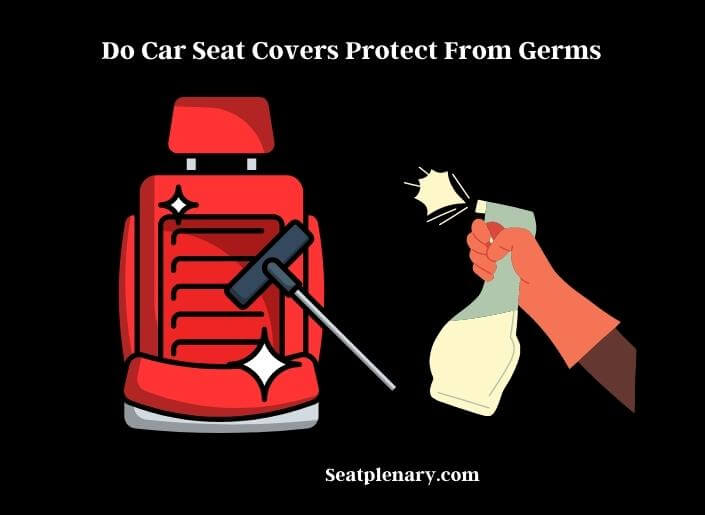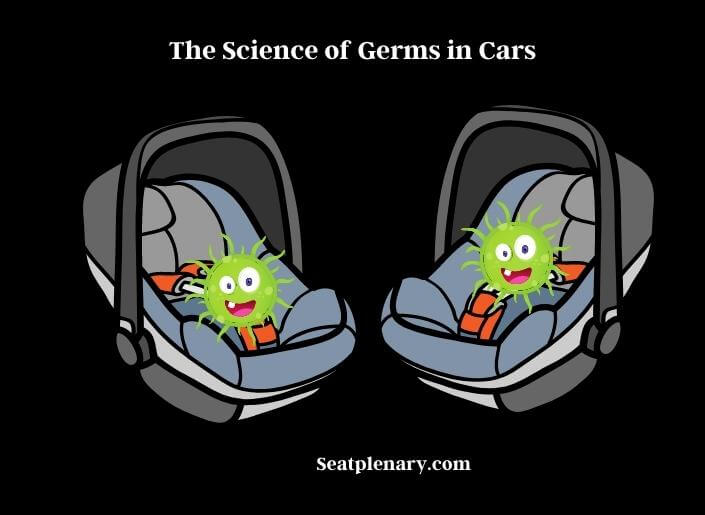Car seats are an essential part of any car, providing a safe and comfortable space for passengers during transportation. Car seats are also a breeding ground for germs and bacteria, especially if they are not cleaned and maintained regularly. Car seat covers have become a popular solution to this problem, with many claiming that they can protect from germs and bacteria.

But do the car seat covers really work to protect from germs? In this article, we will explore the effectiveness of car seat covers in protecting from germs and bacteria, the different types of car seat cover available, and how to choose and maintain a car seat cover to ensure maximum protection.
How Do Germs Spread in Car Seats?
Before we dive into the effectiveness of car seat covers in protecting from germs, let’s understand how germs spread in car seats. When we sit in a car seat (car seat weight and height limits are crucial for ensuring that your child is adequately protected while traveling in a vehicle), we transfer bacteria and other germs from our skin to the surface of the seat.
These germs can survive on the surface for up to several days, depending on the type of germ and the conditions of the environment. If someone else sits in the same seat, they can come into contact with these germs and potentially get infected.
What are Car Seat Covers?
Car seat covers are protective covers that can be placed over the surface of a car seat. They are usually made from a range of materials, including fabric, leather, and vinyl. Car seat covers can come in a variety of designs, colors, and styles to suit different tastes and preferences.
How Effective are Car Seat Covers in Protecting from Germs?
Car seat covers have become increasingly popular as a way to protect car seats from spills, stains, and wear and tear. But can they also protect from germs and bacteria?
The answer is not straightforward. While car seat covers can provide a barrier between the passenger and the seat, preventing direct contact with any germs or bacteria on the surface, they may not be effective at completely protecting from germs.
This is because germs and bacteria can still collect on the surface of the car seat cover, especially if it is not cleaned and maintained regularly. In fact, some car seat covers may even provide a more hospitable environment for germs to thrive, especially if they are made of porous materials that can trap moisture.

Furthermore, car seat covers may not provide protection from airborne germs, which can still enter the car through open windows or the air conditioning system.
Car seat covers can still provide some level of protection, especially if they are made of materials that are easy to clean and disinfect. For example, leather and vinyl covers can be wiped down with disinfectant wipes, while machine-washable fabric covers can be laundered at high temperatures to kill germs and bacteria.
While car seat covers can offer some protection against germs and bacteria, they should not be relied upon as the sole method of germ prevention in a car. It is important to also practice good hygiene habits and regularly clean and disinfect the car’s surfaces.
How to Clean and Maintain Car Seat Covers?
Proper cleaning and maintenance of car seat covers can help prevent the accumulation of germs and bacteria, keeping your car clean and healthy.

- Before cleaning your car seat covers, check the care label to determine the best cleaning method. Different materials require different care, so it is important to follow the manufacturer’s instructions.
- Before cleaning, remove any debris or crumbs from the car seat covers with a brush or vacuum cleaner.
- If there are any stains on the car seat covers, use a gentle cleaner specifically designed for the material of the cover. Test the cleaner on a small, inconspicuous area first to ensure it does not cause any damage or discoloration.
- If the car seat covers are machine-washable, remove them from the car and wash them according to the care label instructions. Use a gentle cycle and a mild detergent.
- After washing, air dry the car seat covers instead of using a dryer, which can damage the material. Hang them outside or on a clothesline, or lay them flat to dry.
- To prevent the buildup of germs and bacteria, it is important to regularly clean and maintain car seat covers. This can include vacuuming, wiping them down with a disinfectant, or washing them regularly.
You can help keep your car seat covers clean and well-maintained, promoting a healthier and more comfortable driving experience by using these guidelines.
The Science of Germs in Cars
Germs and bacteria are everywhere, and cars are no exception. Research has shown that car interiors can be breeding grounds for bacteria, including potentially harmful pathogens like Staphylococcus aureus and Escherichia coli. This is due to a combination of factors, including the confined space of the car, the number of people who use the car, and the surfaces that are frequently touched.
When a person coughs, sneezes, or talks, they release droplets that can contain bacteria and viruses. These droplets can land on surfaces in the car, including the seats, steering wheel, and dashboard. If left untreated, these germs can continue to multiply and spread, putting passengers at risk of infection.

Other Ways to Keep Your Car Clean and Germ-Free
While car seat covers can offer some protection against germs and bacteria, there are other steps you can take to keep your car clean and germ-free.
Regularly clean and disinfect high-touch surfaces: This includes the steering wheel, dashboard, door handles, and any other surfaces that are frequently touched. Use a disinfectant spray or wipes to kill germs and bacteria.
Vacuum the interior regularly: Vacuuming can remove dust, dirt, and other particles that can harbor germs and bacteria. Pay special attention to the crevices and seams of the car seats.
Avoid eating in the car: Food particles and spills can quickly become a breeding ground for bacteria. If you must eat in the car, make sure to clean up any crumbs or spills immediately.
Use air conditioning instead of opening windows: While opening the windows can provide fresh air, it can also let in germs and bacteria from the outside. Using air conditioning can help filter out these particles.
Wash your hands before entering the car: This can help prevent the transfer of germs and bacteria from your hands to the car’s surfaces.
Verdict
Car seat covers can provide some protection against germs and bacteria, but they are not a foolproof solution. While they can provide a barrier between the passenger and the car seat, they may still harbor germs and bacteria if not cleaned and maintained properly.
It is important to practice good hygiene habits and regularly clean and disinfect high-touch surfaces in the car. Avoiding eating in the car, washing hands before entering the car, and using air conditioning instead of opening windows can also help reduce the risk of spreading germs and bacteria.
Relevant Resources:
